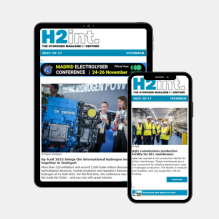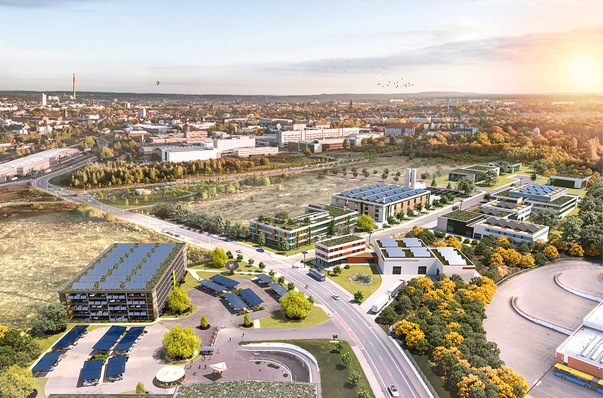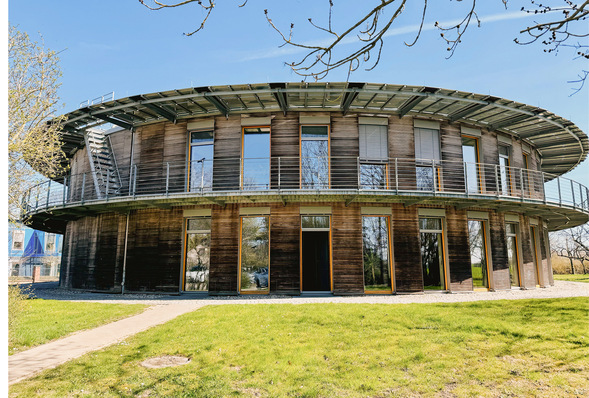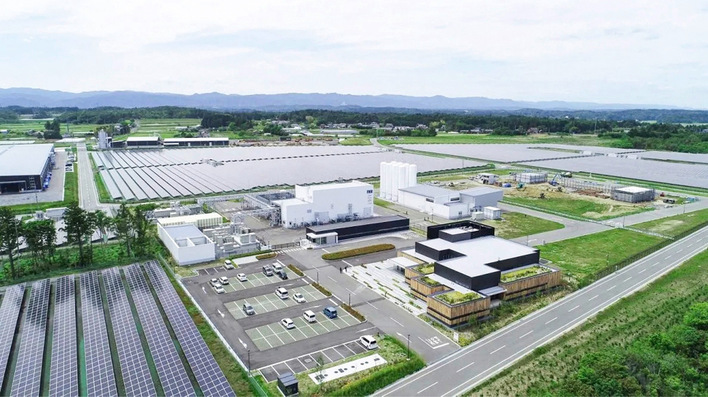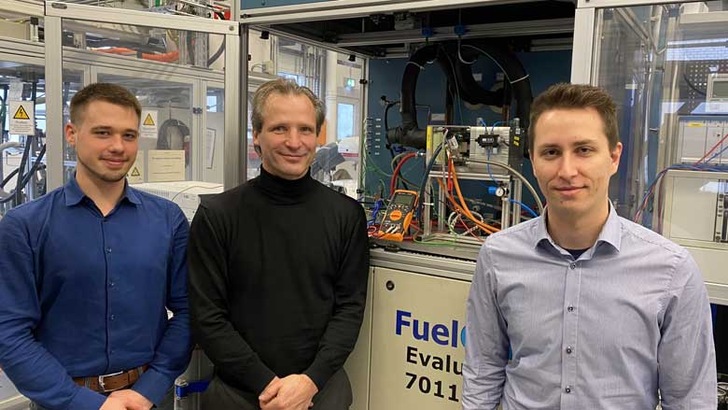
Unusually for a German scientific institution, DHBW Mannheim has its own hydrogen and fuel cell laboratory, situated at its Eppelheim campus, with an electrochemical hydrogen compressor or EHC, making it an ideal base for the research project. The EH2C initiative is, in fact, a follow-up to the Horizon 2020 project known as MEMPHYS which succeeded in developing a system to purify and compress hydrogen.
EH2C now takes this method four levels higher in terms of technology readiness, meaning that the process could be adopted by industry very soon. The research team, led by Sven Schmitz, is concentrating on one specific use case: the hydrogen that arises during the manufacturing of solar cells and other semiconductors.
Up until now, this gas has been either diluted with air or released into the atmosphere through combustion – without being utilized. In Europe alone, this equates to several thousand tons of hydrogen a year. In addition to a detailed viability analysis, EH2C plans to optimize the electrochemical compressor to make it possible to filter hydrogen out of the waste gases from semiconductor production and compress it in order to facilitate its reuse.
Flexible, scalable and reliable
The technical challenge when recycling hydrogen in the semiconductor industry is the number of small- and medium-sized production plants involved. Traditional reprocessing methods, however, are only designed with large-scale recycling in mind, making it relatively uneconomical to scale down. The compact and modular form of the EHC recycling system purifies both small and large waste gas flows and is therefore suitable for a broad spectrum of manufacturing facilities. What’s more, the composition of the waste gas and thus its hydrogen content can vary widely depending on the fabrication method and the particular process step. Here, too, this particular recycling system is the right answer since it adapts well to the changing circumstances and guarantees a consistently high purity level.
Authors: Julia Barisic & Christian Geml - DHBW Mannheim


